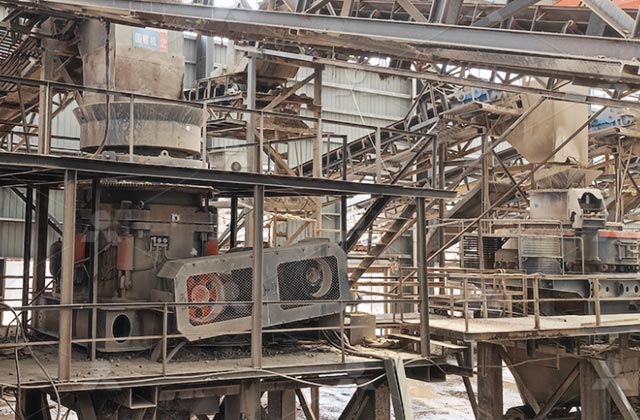A gypsum crushing plant with a capacity of 100 tph (tons per hour) is designed to efficiently break down large quantities of gypsum material into smaller, manageable sizes for further processing or use in construction, agriculture, or other industries. Gypsum, a soft sulfate mineral, is primarily used to produce drywall, plaster, and cement, as well as in the production of fertilizers. A well-structured gypsum crushing plant can help meet the high demand for these materials while ensuring optimal performance and cost-effectiveness. Here is an overview of such a plant.

Key Components of a 100 TPH Gypsum Crushing Plant:
- Primary Crusher:
The first stage of the gypsum crushing process involves reducing large gypsum rocks into smaller, manageable sizes. Typically, a jaw crusher or hammer crusher is used as the primary crusher. The jaw crusher is preferred for its ability to handle larger pieces of material, while the hammer crusher provides a high level of reduction in a single stage. The crusher should be selected based on the raw gypsum’s size and hardness. - Secondary Crusher:
After the primary crushing, the material is transferred to a secondary crusher for further reduction. This could be an impact crusher or cone crusher. The secondary crusher ensures the gypsum material is reduced to the desired size, typically between 2 to 5 cm, which is suitable for further processing or transport. - Vibrating Screen:
A vibrating screen is an essential part of the gypsum crushing plant, used to separate different sizes of material based on the requirements. The screen divides the crushed material into fine, medium, and coarse fractions. The fine fraction is often used in the production of plaster and drywall, while the coarse fraction may be sent to other processing stages. - Conveyor System:
A network of conveyors is used to transport crushed gypsum between various stages of the plant. Conveyors are equipped with durable belts and may include dust suppression systems to minimize airborne dust, which is common during the crushing and handling of gypsum. - Dust Control System:
Gypsum dust is a potential health hazard, so proper dust collection and suppression systems are necessary. Dust collectors, including bag filters and wet scrubbers, are employed to capture fine dust particles and prevent them from escaping into the air, ensuring a safe and clean working environment. - Control Panel and Automation:
Modern gypsum crushing plants are equipped with advanced control panels and automation systems. These allow operators to monitor the plant’s performance, adjust settings, and optimize the crushing process for maximum efficiency. Automated systems also ensure consistency in product quality and reduce operational costs.
Plant Capacity and Performance:
A 100 tph gypsum crushing plant is designed to process approximately 100 tons of gypsum per hour, depending on factors such as the feed material’s hardness, moisture content, and the efficiency of the crushers. To achieve the required output, the plant’s crushers and screens must be carefully selected and calibrated. The plant is usually operated in a continuous cycle, ensuring high throughput and minimal downtime.
Maintenance and Durability:
Regular maintenance is essential to keep the gypsum crushing plant running at its optimal capacity. Wear-resistant components, such as liners and hammers, are used to extend the lifespan of the crushers. Additionally, the plant should be regularly inspected for any signs of wear, damage, or misalignment to prevent production halts.
A 100 tph gypsum crushing plant is a key component in the production of gypsum products, offering high capacity and efficiency. By combining appropriate crushers, screening systems, conveyors, and dust control mechanisms, the plant can process large amounts of gypsum material to meet the demands of various industries. With proper maintenance, such a plant can ensure long-term, cost-effective operation while producing high-quality gypsum for commercial use.

